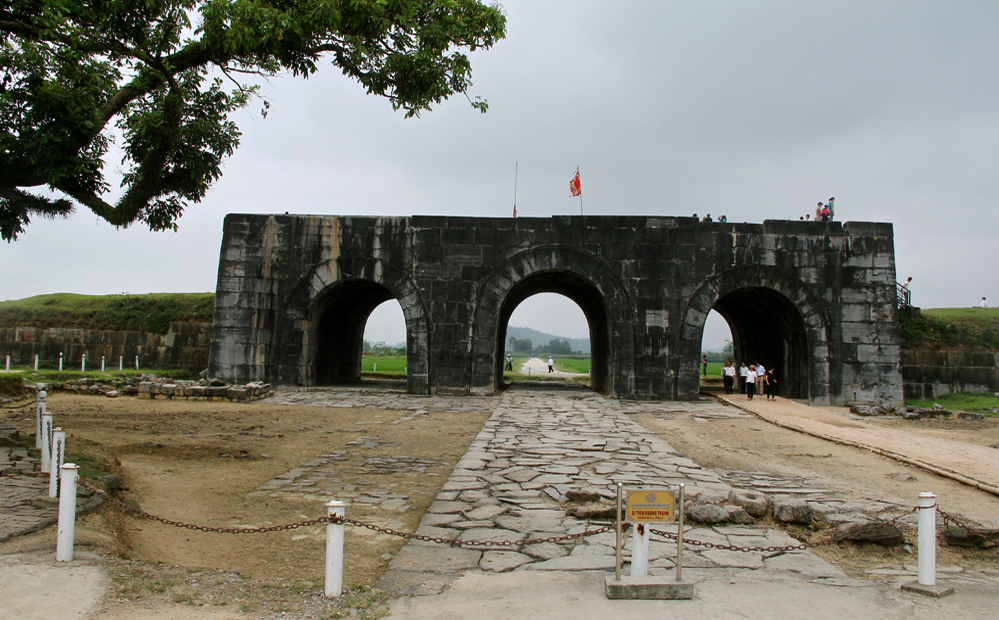Citadel of the Ho Dynasty
The 14th -century Ho Dynasty citadel, built according to the feng shui principles, testifies to the flowering of neo-Confucianism in late 14th century Viet Nam and its spread to other parts of east Asia. According to these principles it was sited in a landscape of great scenic beauty on an axis joining the Tuong Son and Don Son mountains in a plain between the Ma and Buoi rivers. The citadel buildings represent an outstanding example of a new style of south-east Asian imperial city.

Outstanding Universal Value
Brief synthesis
The Citadel of Ho Dynasty built in 1397, composed of the Inner Citadel, La Thanh Outer Wall and the Nam Giao Altar covers 155.5 ha, surrounded by a buffer zone of 5078.5 ha. It is located in accordance with geomantic principles in a landscape of great scenic beauty between the Ma and Buoi rivers in Vinh Loc district, Thanh Hoa province of Viet Nam. The Inner Citadel constructed of large limestone blocks represents a new development of architectural technology and adaptation of geomantic city planning in an East Asian and South-east Asian context. It demonstrates the use of architectural elements in terms of space management and decoration designed for a centralized imperial city in order to show a concept of royal power, based on the adoption of the Confucian philosophy within a predominantly Buddhist culture. Being the capital of Viet Nam from 1398 to 1407 and also the political, economic and cultural centre of North Central Viet Nam from the 16th to the 18th century, it bears exceptional testimony to a critical period in Vietnamese and South-east Asian history when traditional kingship and Buddhist values were giving way to new trends in technology, commerce and centralized administration.
Criterion (ii): The property exhibits Chinese Confucianism influence on a symbol of regal centralized power in the late 14th – early 15th century. It represents new developments in architectural style with respect to technology and, in adapting pre-existing geomantic city planning principles in an East Asian and South-east Asian context, makes full use of the natural surroundings and incorporated distinctly Vietnamese and East and Southeast Asian elements in its monuments and landscape.
Criterion (iv): The Ho Citadel is an outstanding example of an architectural ensemble in a landscape setting which illustrates a flowering of pragmatic Neo-Confucianism in late 14th century Viet Nam, at a time when it was spreading throughout East Asia to become a major philosophical influence on government in the region. The use of large blocks of stone testifies to the organizational power of the Neo-Confucian state, and the shift in the main axis distinguishes the Citadel layout from the Chinese norm.

